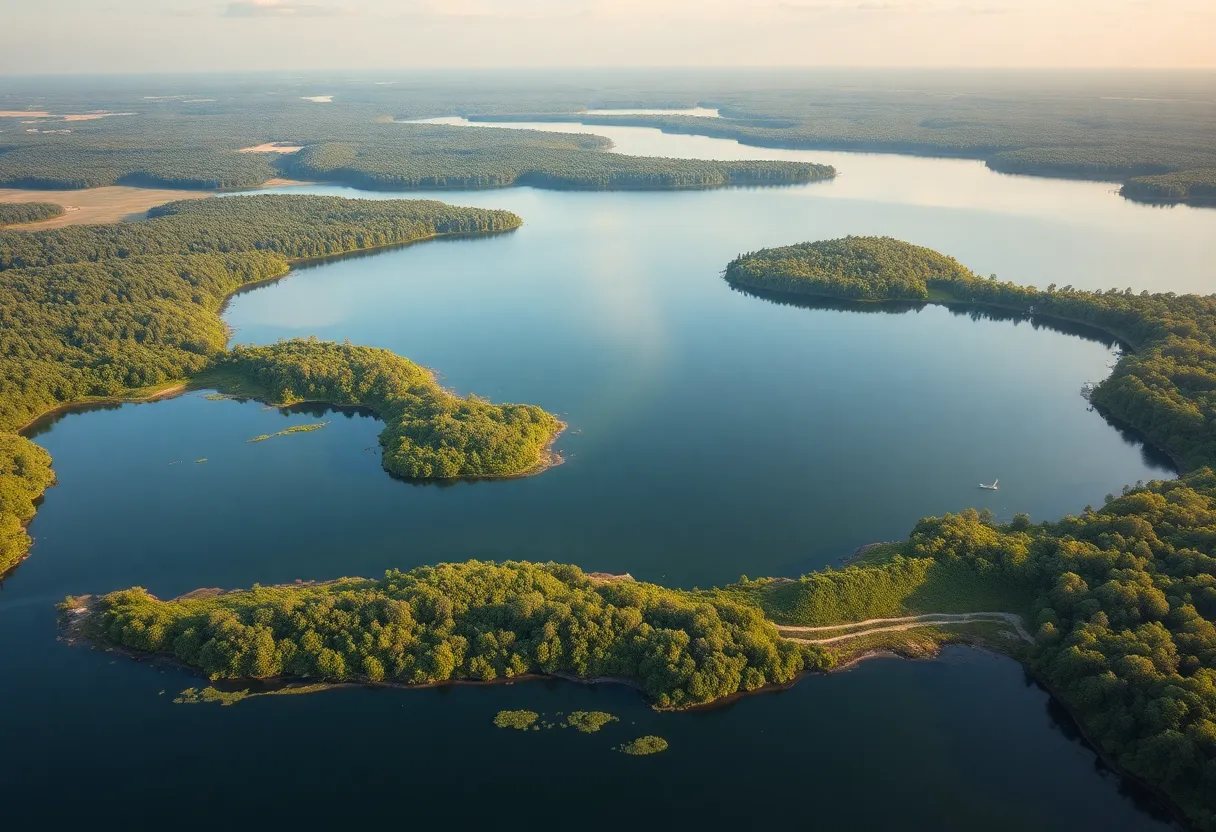News Summary
Tulare Lake, once lost for over 130 years, has resurfaced in California’s San Joaquin Valley following dramatic weather changes. Spanning 120,000 acres at its peak, it has revitalized local ecosystems but also caused flooding issues for agricultural workers. This resurgence serves as a reminder of the ongoing challenges posed by climate change and the need for better water management. The indigenous Tachi Yokut tribe celebrates their cultural connection to the lake, highlighting a significant moment in the area’s ecology and heritage.
Tulare Lake Makes a Dramatic Comeback in California’s San Joaquin Valley After Over 130 Years
Tulare Lake, once the largest freshwater body west of the Mississippi River, has reemerged in California’s San Joaquin Valley after more than 130 years of disappearance. The revival of this historic lake began in 2023, fuelled by a series of atmospheric rivers and rapid snowmelt from the Sierra Nevada mountains, marking a striking shift in the region’s landscape and ecology.
At its peak in 2023, Tulare Lake spanned approximately 120,000 acres, submerging over 94,000 acres of farmland. This resurgence has rekindled the local ecosystem, bringing back migratory birds, fish, and amphibians that had long been absent from the area.
However, this natural revival has not come without consequences. The flooding associated with the lake’s resurgence has caused considerable damage to homes and properties, particularly affecting agricultural workers and landowners in a region where water is often scarce.
The lake, historically known as “Pa’ashi” by the indigenous Tachi Yokut tribe, was once vital for sustenance and transportation. In the late 19th century, it spanned more than 100 miles in length and 30 miles in width, allowing steamships to travel from Bakersfield to San Francisco—a journey of nearly 300 miles. The lake was fed primarily by snowmelt from the Sierra Nevada mountains, but with an average annual rainfall of just over 10 inches—often falling to as little as three inches—it began to dwindle.
State policies initiated in the late 1850s and early 1860s aimed at land reclamation for private ownership accelerated the lake’s decline, leading to its complete disappearance around 1890. Since then, Tulare Lake has shown a historical pattern of resurfacing and vanishing, with recordings of partial returns in the 1930s, 1960s, and 1980s.
As of March 2024, the lake has diminished considerably to approximately 2,625 acres, raising alarm among residents and environmentalists about the lake’s potential imminent disappearance once again. With climate change contributing to fluctuating weather patterns, experts anticipate that such large floods may occur more frequently, emphasizing the need for updated water management practices in the region.
The Tachi Yokut tribe has embraced the lake’s revival, participating in cultural ceremonies and re-engaging in traditional hunting and fishing practices that connect them to their ancestral heritage. This resurgence of cultural practices marks an important moment not only for the tribe but also for the ecosystem that once thrived around the lake.
As Tulare Lake continues to fluctuate, the challenges it presents for local agriculture, as well as the opportunities it creates for rewilding and cultural reconnection, are placed under increasing scrutiny. The return of this historic lake serves as a poignant reminder of the complex relationship between human activity, environmental stewardship, and the natural world.
In summary, the resurgence of Tulare Lake after more than a century stands as a multidimensional phenomenon, impacting local ecosystems, indigenous cultures, and agricultural practices while highlighting ongoing debates about water management in an era of climate change.
Deeper Dive: News & Info About This Topic
- NDTV: Tulare Lake Returns
- indy100: Tulare Lake in 2024
- The Cooldown: Tulare Lake and Drought
- Live Mint: Tulare Lake Resurfaces
- Wikipedia: Tulare Lake








